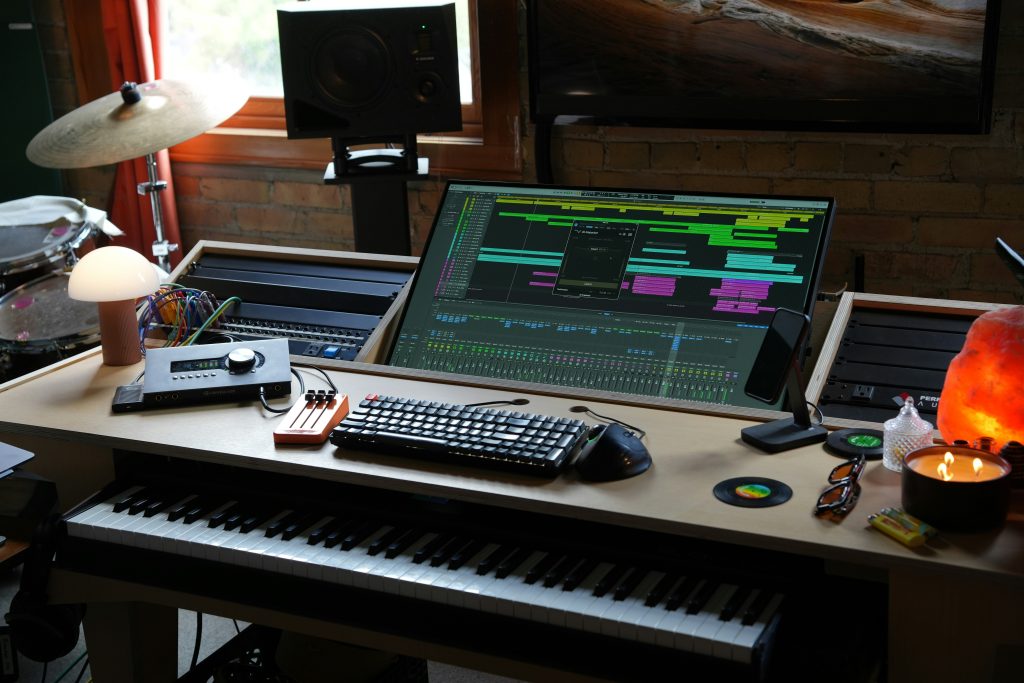Ticking Closer to the Abyss: Humanity’s Existential Countdown Intensifies
The world teeters on a precarious edge, and the symbolic Doomsday Clock, a stark visual representation of humanity’s proximity to self-inflicted annihilation, has just ticked one second closer to midnight. This year’s shift, setting the clock at an unprecedented 89 seconds to midnight, is a grim reminder of the confluence of escalating global threats that threaten our very existence.
For nearly eight decades, the Bulletin of the Atomic Scientists, a collective of esteemed experts and Nobel laureates, has maintained this stark metaphor. The clock’s position isn’t about predicting the future; it serves as a critical warning system, highlighting the growing dangers we face from our own actions. Each adjustment, each second gained or lost, reflects the shifting landscape of global risk. The recent movement, however, carries with it a particular urgency.
## A Perfect Storm of Global Instability
The decision to move the clock closer to midnight isn’t based on a single isolated incident, but rather on a potent cocktail of destabilizing factors that have been brewing for years. The most glaring of these is the looming shadow of nuclear conflict. Russia’s aggression in Ukraine has rekindled fears of nuclear escalation, shattering the fragile peace that has held since the end of the Cold War. Bellicose rhetoric from various sides, coupled with a breakdown in arms control treaties, has raised the specter of nuclear war to heights not seen in generations.
But the threat of nuclear annihilation is not the only concern. Climate change, once considered a long-term problem, is now manifesting as a present and increasingly destructive force. We are witnessing extreme weather events with increasing frequency and intensity, from raging wildfires and devastating floods to prolonged droughts and rising sea levels. These environmental upheavals threaten food security, displace communities, and further strain already fragile social systems.
Beyond these cataclysmic dangers, a third, and increasingly concerning threat is emerging: the reckless and unregulated advancement of artificial intelligence (AI). While AI holds immense potential for progress, its misuse and unchecked deployment pose a range of existential risks, including the potential for autonomous weapons systems and the creation of misinformation and propaganda campaigns that could further destabilize democratic institutions. The unchecked advancement of AI with limited safeguards is adding another layer of complexity to an already precarious situation. The scientists behind the Doomsday Clock have expressed growing concern about the absence of safety protocols in AI development and the potential it holds for widespread misuse.
##### The Clock’s Evolution: From Atomic Threat to Multifaceted Dangers
The Doomsday Clock’s history reflects the changing nature of global threats. Initially conceived during the dawn of the atomic age, it was primarily a measure of nuclear risk. But over time, the clock has expanded its scope to encompass a broader range of threats, including climate change, biological weapons, and now, AI. This evolution demonstrates that the existential dangers facing humanity are not singular but complex and interconnected.
The Doomsday Clock isn’t merely a symbolic gesture, it serves as a powerful call to action, a reminder that humanity’s fate is not predetermined. The current positioning, with the clock at its closest point to midnight, is a clarion call for leaders and citizens alike to recognize the urgency of the situation. The clock’s shift is a forceful statement, urging a shift in global priorities and collective effort. It’s a stark demand for immediate and concerted action. It’s a call for increased diplomacy, a renewed commitment to addressing climate change, and the development of ethical guidelines for the responsible innovation of Artificial Intelligence.
The decision to move the clock forward isn’t an attempt to evoke fear and despair. It is, instead, a call to awareness and a demand for a proactive engagement to secure a safer future for all. We must strive to reverse the trend towards self-destruction and work collectively to wind the clock back, far from midnight. The time for complacency is over. The time for action is now.
Tags: AI Ethics, Artificial Intelligence, atomic scientists, Climate Change, doomsday clock, Environmental Crisis, existential threats, global risks, nuclear proliferation, nuclear threat
Nvidia’s Meteoric Rise: AI Domination and the Next ‘ChatGPT Moment’
## Nvidia’s Meteoric Rise: AI Domination and the Next ‘ChatGPT Moment’
Nvidia, the world’s second-most valuable company, is experiencing a phenomenal surge, fueled by its dominance in the artificial intelligence (AI) sector. Its stock has recently hit record highs, driven by CEO Jensen Huang’s recent announcements and the company’s strategic moves in the rapidly evolving AI landscape.
##### A Monopolistic Grip on the Data Center
Nvidia holds a near-monopolistic position in data center GPUs, a crucial component for powering AI advancements. This commanding market share has translated into explosive revenue growth. However, the company faces a potential challenge: its largest customers, including major cloud service providers like Amazon, Microsoft, and Alphabet, are actively developing their own AI chips, potentially threatening Nvidia’s future dominance.
##### The CES 2025 Keynote: A Catalyst for Growth?
Jensen Huang’s highly anticipated keynote address at CES 2025 sent shockwaves through the market. During his presentation, Huang teased the next “ChatGPT moment” in AI, hinting at groundbreaking technological advancements and new product releases. This announcement immediately propelled Nvidia’s stock to new heights, further cementing its position as a leader in the AI revolution.
Huang’s presentation showcased how Nvidia’s data center AI chip technology is being integrated into consumer PCs, expanding the company’s reach beyond its core data center market. This strategic move signifies Nvidia’s commitment to broad market adoption of its AI capabilities.
The positive reception of Huang’s keynote, coupled with upbeat news regarding Foxconn’s earnings, which indicated strong demand for Nvidia’s products, bolstered investor confidence in the company’s future prospects. Analysts are anticipating continued strong growth, driven by the increasing demand for AI processing power across various industries.
##### Navigating the Competitive Landscape
Despite its current success, Nvidia faces significant competition. The development of in-house AI chips by major cloud providers poses a long-term threat. The company’s strategy to address this involves continuous innovation, ensuring its technology remains at the cutting edge and maintaining its appeal to a broad range of customers beyond data centers. The success of this strategy will be crucial in determining Nvidia’s long-term growth trajectory.
##### The Future of Nvidia: A Look Ahead
The future looks bright for Nvidia, with analysts predicting continued strong growth fueled by the ever-increasing demand for AI capabilities. However, the company must remain agile and innovative to maintain its competitive advantage in a rapidly evolving market. The potential for disruption from competitors developing their own AI chips remains a significant factor to consider. The continued success of Nvidia’s strategy to diversify and expand beyond its current market will ultimately determine its long-term position in the world of artificial intelligence.
##### Investor Sentiment and Stock Performance
Investor sentiment remains overwhelmingly positive, with many believing that Nvidia’s innovative technology and strong market position will continue to drive significant growth. The stock’s recent surge reflects this optimism, and analysts are closely watching Nvidia’s performance in the coming quarters to assess the long-term implications of Huang’s announcements and the company’s overall strategy. The company’s ability to maintain its lead in the AI race will dictate the trajectory of its stock price in the years ahead.
The ongoing developments in the AI sector, coupled with Nvidia’s strategic moves, make it an incredibly compelling stock to watch. The next chapter in Nvidia’s story promises to be just as exciting, if not more so, than the one we’ve just witnessed.
Tags: AI, Artificial Intelligence, CES 2025, cloud computing, Competition, Data Center, GPU, Investment, Jensen Huang, Market Dominance, Nvidia, Nvidia stock, Revenue Growth, Stock Market Analysis, Technology
Nobel Prize in Physics Awarded to Pioneer of Deep Learning
In a groundbreaking moment for the field of artificial intelligence, Geoffrey Hinton and John Hopfield have been awarded the 2024 Nobel Prize in Physics for their significant contributions to the development of machine learning through artificial neural networks. Hinton, often referred to as the ‘godfather of AI’, has played a pivotal role in advancing the understanding and capabilities of these computing systems that mimic the workings of the human brain.
Artificial neural networks are a class of algorithms designed to recognize patterns and learn from data, much like the human brain processes information. Hinton’s work has laid the foundational framework that has propelled deep learning into the forefront of technology, impacting various sectors from healthcare to finance and beyond.
Despite the accolades, Hinton has expressed concerns about the implications of his work. In recent discussions, he has articulated fears regarding the potential misuse of AI technologies, emphasizing the ethical considerations that must accompany rapid advancements in machine learning. This duality of innovation and caution creates a compelling narrative around the future of AI and its role in society.
Hinton’s collaboration with Hopfield has yielded transformative inventions that allow machines to learn and adapt to new information autonomously. This has opened doors to developments in areas such as natural language processing, image recognition, and autonomous systems, significantly altering the landscape of technology as we know it.
The Nobel Prize serves not only as recognition of Hinton’s profound impact on physics and computer science but also as a reminder of the responsibilities that come with such technological advancements. The implications of AI are vast, and as we continue to integrate these systems into our daily lives, it is crucial to maintain a dialogue about their ethical and societal impacts.
As the academic community and tech industry celebrate this monumental achievement, it is also a moment for reflection on the direction of AI research and its alignment with human values. The discourse surrounding the balance of innovation with ethical considerations is more relevant than ever, as stakeholders from various sectors come together to navigate the complexities of artificial intelligence.
In conclusion, Geoffrey Hinton’s Nobel Prize is not just a recognition of his past achievements but also a catalyst for ongoing conversations about the future of technology and its intersection with society. The journey of artificial intelligence is just beginning, and with pioneers like Hinton at the helm, the path forward will undoubtedly be both exciting and challenging.
Tags: Artificial Intelligence, Deep Learning, Ethics, Geoffrey Hinton, Machine Learning, Nobel Prize
Epic’s Innovations in Healthcare Technology Transforming Prior Authorization and EHR Systems
In a groundbreaking move, Epic is revolutionizing the healthcare landscape by collaborating with major insurers like Aetna and Elevance Health to enhance the efficiency of prior authorization processes. This partnership aims to streamline the often cumbersome and time-consuming procedures that healthcare providers face, ensuring that patients receive timely access to necessary treatments without unnecessary delays. Prior authorization has long been a bottleneck in the healthcare system, leading to frustration among providers and patients alike. With Epic’s innovative approach, the integration of technology into these processes is set to alleviate these challenges significantly.
Moreover, Epic is not stopping at just improving prior authorizations. The company is investing heavily in artificial intelligence (AI) to advance its Electronic Health Record (EHR) systems. By leveraging predictive models and generative AI, Epic aims to enhance the functionality and user experience of its EHR platforms. This focus on AI represents a significant shift towards more intelligent and responsive healthcare solutions that can adapt to the dynamic needs of healthcare providers and their patients.
As the healthcare industry continues to evolve, Epic’s commitment to integrating advanced technologies positions it at the forefront of this transformation. The utilization of AI not only promises to streamline processes but also enhances the accuracy of patient data management, ultimately leading to better patient outcomes.
Looking forward, the question arises: what comes next for Epic? The company is poised to explore further advancements in AI and machine learning, potentially introducing new features that will redefine how healthcare providers interact with patients and manage their care. As healthcare systems worldwide increasingly embrace digital transformation, Epic’s initiatives could serve as a model for others to follow.
The implications of these developments are profound. By simplifying administrative processes and enhancing data management through AI, Epic is paving the way for a more efficient healthcare system. This shift not only benefits healthcare providers but also holds the promise of improving patient experiences and outcomes across the board.
In conclusion, Epic’s innovative strategies in collaboration with major insurers and its investment in AI technology underscore a significant evolution in the healthcare sector. As these initiatives unfold, they will likely set new standards for efficiency and effectiveness in healthcare delivery, ultimately benefiting patients and providers alike.
Tags: Artificial Intelligence, Epic, Healthcare Innovation




